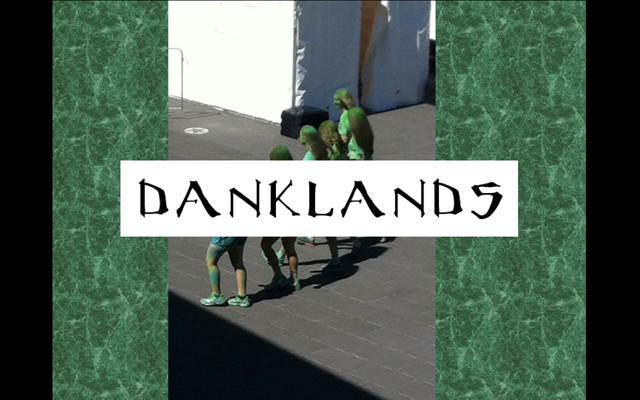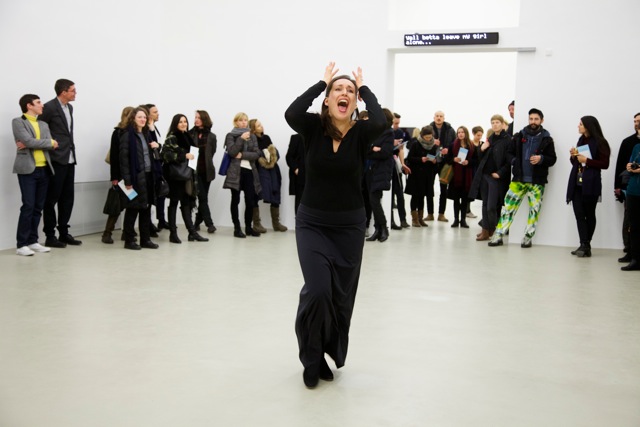“I’m going for a deeply oceanic look today”, Holly Childs is reading from her upcoming book Danklands, to be published via Arcadia Missa on December 9. It’s an excerpt of what she calls, “a make-up tutorial that is also subliminally a climate change awareness campaign, or a self-defence for women pep talk”. It features a persona called ‘Augustine’ pointing at ephemeral hyperlinks from inside a computer screen, while recommending “slut shame” eye shadow or “urban decay & deathzone 4 Eva” liner to suit any lifestyle: “maybe you’re a scientist who’s just started dating again after a massive break up, or doing some whaling”. From here come the ideas of “dredging and resurfacing” that Childs actively explores in her work, a subject that is revisited in various forms across ideas and artistic practices expressed in conversation with several other writers and artists. They include Cally Spooner and David Jablonowski, as well as art historian Florian Cramer and panel moderator Elvia Wilk at Lunch Bytes exploring Life: Language. The film that should follow the ICA programme is being delayed as the last in the London editions of the Goethe-Institut‘s European series applies some interesting ideas to the computer generated future of communication via the internet.

“’Always scared amateur porn is going to turn out to be a snuff film”, Childs is quoting Australian artist Aurelia Guo in exploring the “rerouting of form” where a format meant to present one agenda exposes itself for harbouring another. Hence the post-presentation question time concerning Emoji and their relationship with the corporate interests of the companies that produce them – say, the myth of “John Appleseed” embedded in Apple’s tiny pictographs. It’s a technologised type of social interaction that started in emoticons and has since been colonised by corporate entities; Microsoft, Google and Yahoo! encoding them with their own ideologies. Spooner goes further with these “shared behaviours between labour and speech, and therefore politics” citing Hannah Arendt’s derailing of a political form of life through speech and actions in the “big musical collapse” of her ‘And You Were Wonderful, On Stage’ (2014) performance. It was inspired by the artist’s experiences working with an advertising agency in a campaign that would refill its employees’ real-life stories with a company’s brand and values, only to resell it to its staff.
“I was thinking about how people use Emoji when they’re sexting, like an eggplant is supposed to be a dick”, Childs deadpans about the subversive potential of recalibrating said characters’ intended corporate meaning via context. This is something Cramer also illustrates via the encoded language of early 4Chan image boards, where he draws parallels between the highly referential “visual linguistics” of 17th century allegorical art and something like ‘Y U NO?’ or the Anonymous meme-cum-hacktivist group-cum-global symbol of dissent. The latter’s famous Guy Fawkes mask signifier is, of course, an iconic image that draws from Alan Moore’s cult graphic novel, V for Vendetta – which in turn was inspired by the 16th century activist – resurfacing via a Japanese anime-inspired culture transfered to Western image boards and manifesting physically via the #occupy movement.

In his ‘Powerslave, Revolution Main (Signature Series)’ (2014), recently shown at BRANDS – CONCEPT/AFFECT/MODULARITY, David Jablonowski draws a link between political revolutions via his found object sculptural arrangement of Iron Maiden tour merchandise from 1984. The band are regarded as the first rock act to cross into the Eastern Bloc at the time, while the limited edition Vans shoes were discovered by the Netherlands-based artist during a visit to New York when the 2012 Arab Spring in Egypt had erupted.
That sort of layering of symbolic objects not only expresses a sort of density of information but also an emptying out of a self-contained object’s self-contained meaning, especially when presented in pairings as disparate as the plexiglass and lacquered bamboo boxes in Jablonowski’s ‘Alibaba (dot cn dot sa dot com)’ (2014) sculpture at To Satisfy Algorithms/ Still Life with Asparagus. It’s inspired by a Chinese-founded trade website (alibaba.com) with an Arabic reference that has no connection to the region’s history except for its global potential for brand recognition.
Illustrating language as highly coded and malleable to its context – whether corporate, political or personal (often all three) – it’s in a clash of cultures and concerns that makes contemporary communication and the Lunch Bytes Life: Language discussion such a dynamic one. Cramer references Heath Bunting’s 1998 “social sculpture” ‘_readme.html (Own, Be Owned or Remain Invisible)’, where an article written by the net artist for Wired magazine is entirely linked by words to a corresponding .com domain. Starting out with mostly dead links, in the almost two decades since, they’ve been almost entirely populated and commercialised – even the conjunctions like ‘at’, ‘and’ and ‘to’.

Meanwhile, Spooner’s ‘Damning Evidence Illicit Behaviour Seemingly Insurmountable Great Sadness Terminated In Any Manner’ (2014) opera takes its title from a public statement made by Nike after Lance Armstrong’s revelations of doping. The opera itself outsources its scores to comment threads reacting to public controversy like Beyonce’s lip-synced Obama inauguration performance (“if you can’t trust her, who can you trust?”). All this, while Cramer suggests, “a new kind of writing needs to be invented”. But when Childs shares her “cute and nice conversation” with a Microsoft Word spell check function via an error-box gesturing, “it didn’t have the exact language to convey what it was thinking or feeling”, I rather think it already has. **













